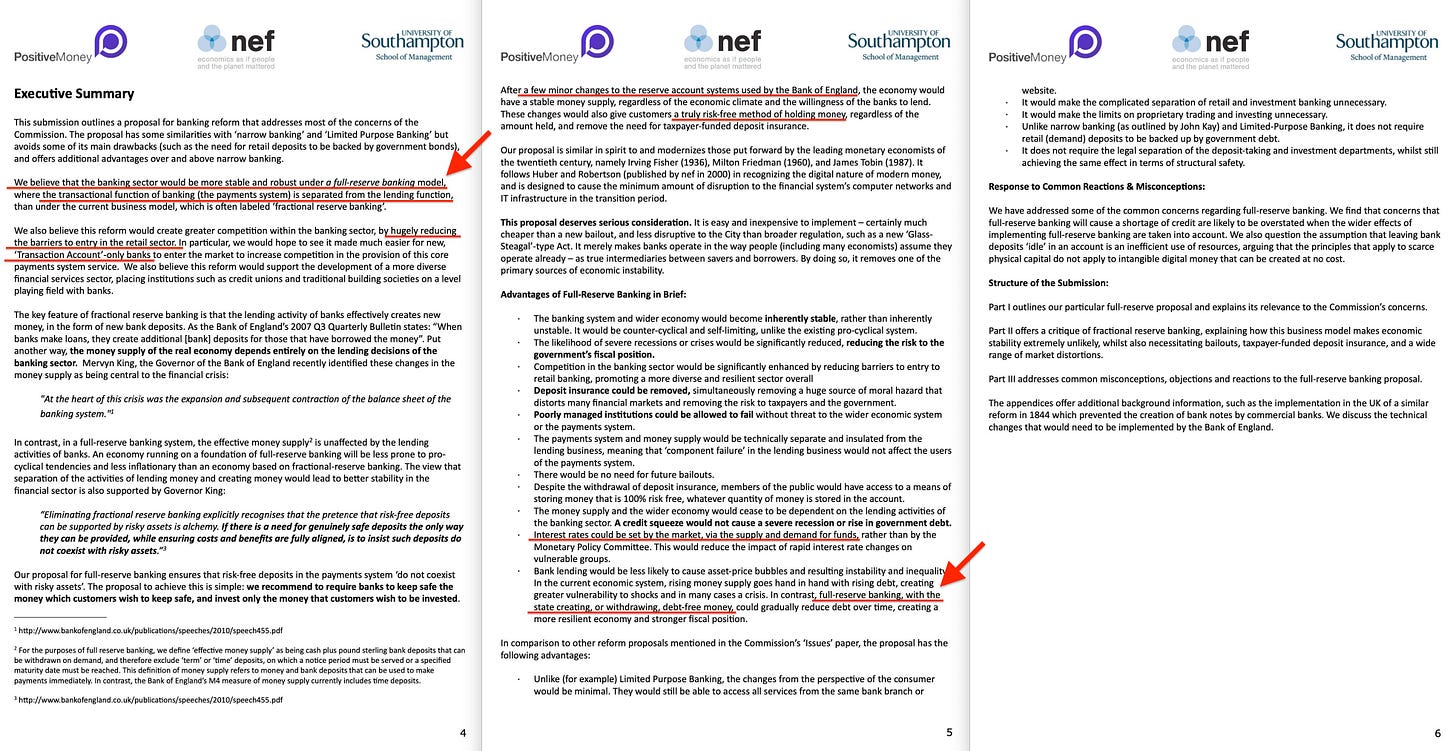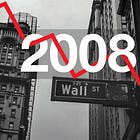You might wonder—what is positive money.
But the more important question is—who does it benefit?
And the most important question is—what is its logical outcome?
Let’s begin with a slightly different concept—one from the gold markets that mirrors what Positive Money proposes. Specifically, let’s examine how Gold Certificates function.
A gold certificate1 is a claim on gold, typically stored in a secure vault controlled by a government, central bank, or designated depository. Each certificate usually represents a specific quantity of gold—say, one troy ounce—that, in theory, can be redeemed for physical gold. In practice, however, minimum thresholds and waiting periods often apply before delivery. If you requested 100 ounces of gold—and met the minimum redemption requirements—you would be informed where and when to pick it up in exchange for your certificate.
However, there are different types of gold certificates, with the most significant distinction being allocated versus unallocated.
Allocated certificates correspond to a specific quantity of gold physically segregated in a vault.
Unallocated certificates, by contrast, are not tied to a specific stored quantity. They merely represent a claim to a certain amount of gold, fulfilled upon redemption.
When you request redemption:
If you own an allocated certificate, you receive a set amount of gold already in storage.
If you own an unallocated certificate, fulfillment depends on availability. Larger orders may take longer, as bullion banks use unallocated gold for trading and lending purposes.
Because allocated gold certificates include storage fees for vaulting, security, and insurance, they tend to be the more expensive option. By contrast, unallocated gold certificates typically incur little to no direct storage costs, since the gold is not physically set aside and may be used by the bank for trading and lending. But this also comes with risk: in the event of a run on the bank, you could face long delays in receiving your gold—or even lose it entirely if the bank lacks sufficient reserves
In effect, unallocated gold enables a fractional reserve system, where banks hold only a fraction of the total unallocated gold claims in storage. If all holders of unallocated gold were to request redemption simultaneously, this could trigger a liquidity crisis in the bullion banking system—essentially, a ‘run on the bank’.
Positive Money and the Banking System
Positive Money2 introduces a similar concept3.
Transaction accounts (allocated accounts) are fully backed by central bank reserves.
Investment accounts (Unallocated accounts)—such as savings accounts—allow banks to create money through lending, just as unallocated gold operates in a fractional reserve system, which underpins our contemporary financial system.
But Positive Money frames this differently.
Rather than focusing on reserves, it highlights the money creation process, which, in today’s system, occurs primarily through banks.
When you apply for a loan, the bank creates new money out of thin air. However, this newly created money is backed by the debt you accept when taking on the loan. Consequently, in our current system, money is created when you take out a loan, which you commit to repaying—both the original loan amount (the principal) and typically interest—over a set period (the maturity). If you take out an interest-only mortgage, you effectively defer repaying the principal..
The bank then pools these mortgages, securitizes them into mortgage-backed securities, and converts them into collateralized debt obligations (CDOs), tranching them into different layers where risk is traded for reward.
This process collapsed spectacularly in 2008, yet today, the same model exists in a different form under the term ‘blended finance’.
How the System Works Today
In today’s system, a central bank typically expands its balance sheet through open market operations (with quantitative easing being one aspect). The resulting money is added to the accounts of primary dealers (such as investment banks).
These primary dealers then, through fractional reserve lending, create new money out of thin air when you take out a mortgage.
Historically, central banks imposed reserve requirements, limiting how much money banks could lend. However, in 2020, at the onset of the alleged pandemic, the reserve ratio was set to 0%4—effectively eliminating the requirement.
A typical reserve ratio of 10% would mean that a bank can lend out 90% of deposited funds.
Before COVID, the reserve ratio typically hovered around 3%, meaning that for every $1 deposited, banks could theoretically lend out $33—a concept known as the leverage ratio.
The bottom line is that the vast majority of new dollars come into existence through retail and commercial banks, which create money by lending it into existence.
And it is precisely this credit creation process that Positive Money seeks to change.
What Does Positive Money Propose?
Positive Money suggests that central banks should focus on the quantity of money in circulation rather than the interest rate mechanism.
This means that, at any given time, central banks should determine how much money should exist in the economy and decide whether to expand or contract the money supply (though historically, central banks have not exactly prioritized contraction).
By focusing exclusively on the quantitative aspect, central banks could eliminate base interest rates. Instead, rates would be determined naturally by competition for available money:
If demand for loans is high, interest rates rise, as borrowing becomes more competitive (more bidders, higher price).
If borrowing demand is low, interest rates decline, reflecting a lower price of money.
The key takeaway? Consumers would have the ability to choose:
A fully backed transaction account (allocated, 100% reserve ratio).
An investment/savings account (unallocated, lower reserve ratio, likely paying interest).
In other words, Positive Money suggests introducing a new type of money with a 100% reserve ratio5. In essence, in the context of ‘allocated’ money, this means transferring the money creation process from banks and financial institutions to the central bank.
Consequently, assuming a static money supply from the consumer's perspective, but with an increasing percentage of ‘allocated’ money, Positive Money's proposal would require a colossal expansion of central banks' balance sheets.
Implications of a Shift to Allocated Accounts
Currently, 0% of the money supply is allocated. Let’s assume the total money supply is $1,000, with $100 in central bank reserves, making the leverage ratio 10x.
If 10% were allocated (which require 100% reserve backing), this would require $100 in central bank reserves, reducing unallocated money to $900. With a 10x leverage ratio, unallocated reserves would require a further $90 in central bank backing.
Thus, by shifting 10% to allocated accounts, central bank reserves must increase from $100 to $190. If this percentage was to further rise to 25%, central bank reserve requirements would rise to $325. Logically, once this mechanism is introduced, what’s to stop it from being driven all the way to 100%?
And if this money, through front-facing agents of the central banks6—such as BlackRock7, Vanguard, and State Street—were used to buy up every asset in sight…
… then the utopian vision outlined by Marx and Engels in The Communist Manifesto8 could come to pass even faster!
Keep reading with a 7-day free trial
Subscribe to The price of freedom is eternal vigilance. to keep reading this post and get 7 days of free access to the full post archives.












